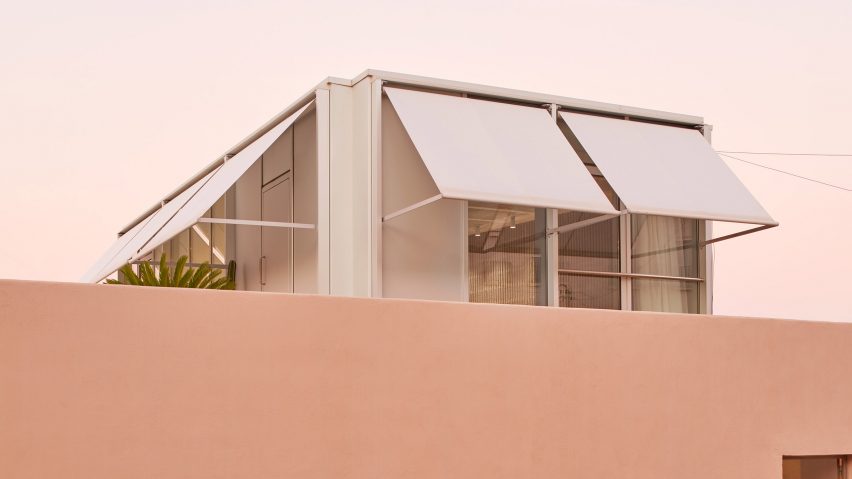
Villain House is a concrete replica of an old Barcelona townhouse
Local studio Architecture Office Claudia Raurell has replaced a dilapidated townhouse in Barcelona with a concrete home that mimics its original footprint.
Named Villain House, the home incorporates the existing front facade, which Architecture Office Claudia Raurell said was the only salvageable part of the structure.
The new volume has a blocky, straw-coloured concrete structure that almost exactly matches the footprint of the original building.
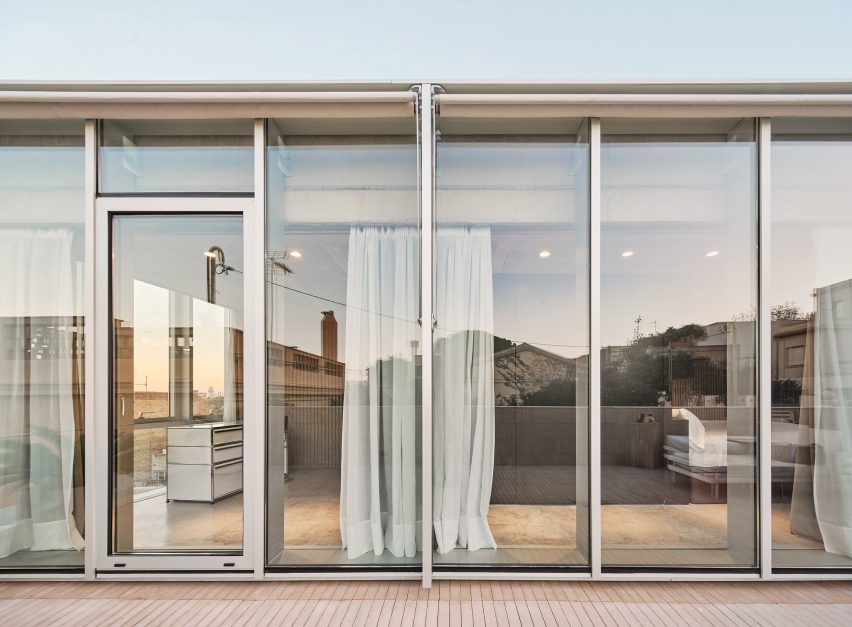
"Only the main wall to the street, which is totally opaque, [was retained]," studio founder Claudia Raurell told Dezeen.
"The rest of the structure was in very bad condition, so we replicated the exact same existing volume, due to urban planning reasons and also because the project believed and worked with the image of permanence, so we didn't want to deform the actual morphology and scale of the preexistence."
Located on the northern slope of Barcelona's Montjuic, the home occupies a trapezoidal site which is bordered on both sides by pale pink-toned party walls.
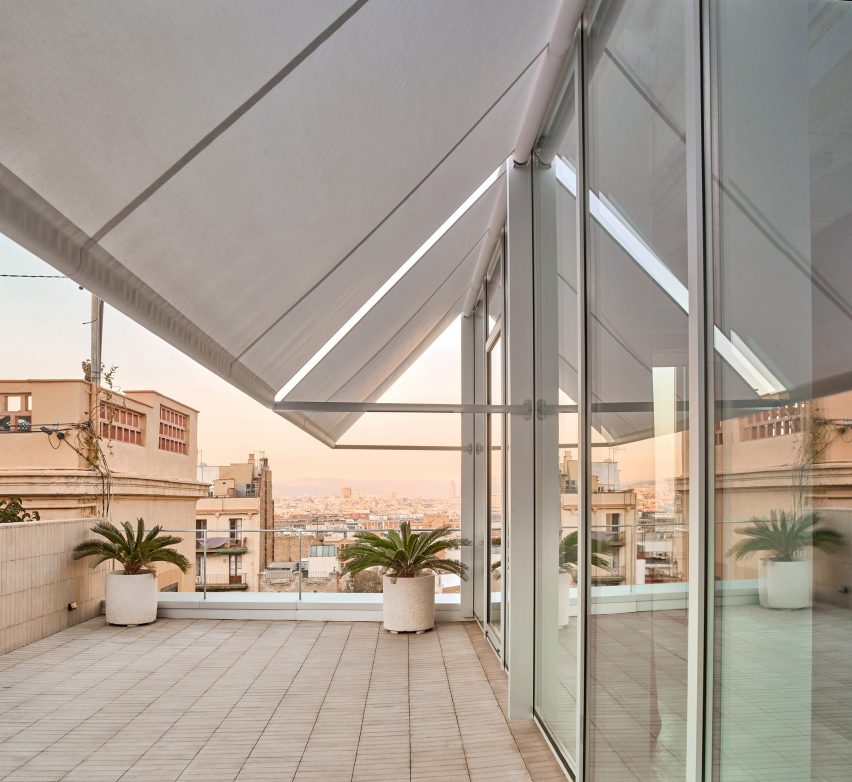
One of the only differences between the old and new structure is the addition of a ground-floor void between the existing earth-toned facade and a new glass wall that runs parallel to it.
This forms a front courtyard that is sheltered from the street outside, lined with pale terracotta-coloured tiles on the floors and walls.
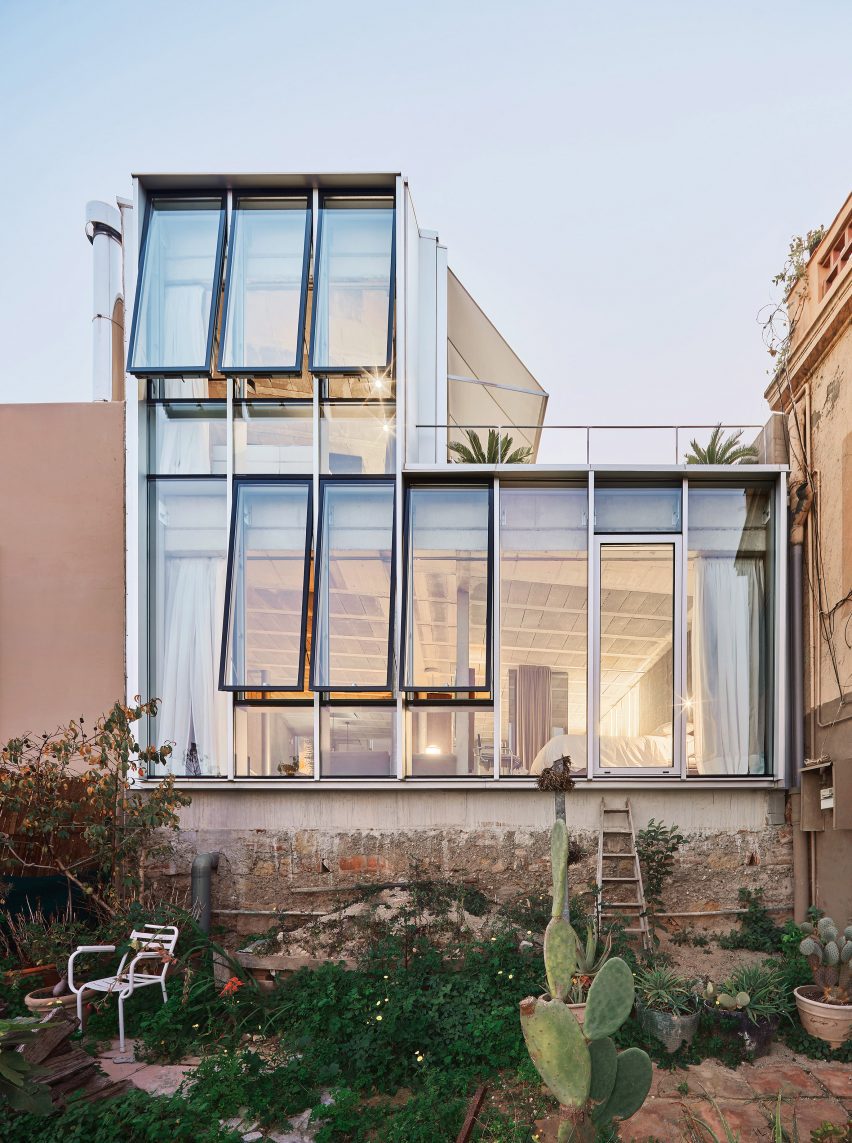
With a built-in bench and tall walls that help shade the house, the courtyard is intended as a casual outdoor living and entrance area that helps regulate internal temperatures.
"The new patio serves as a climate regulator, facilitating cross-ventilation and providing shade through the preserved original wall," the studio explained.
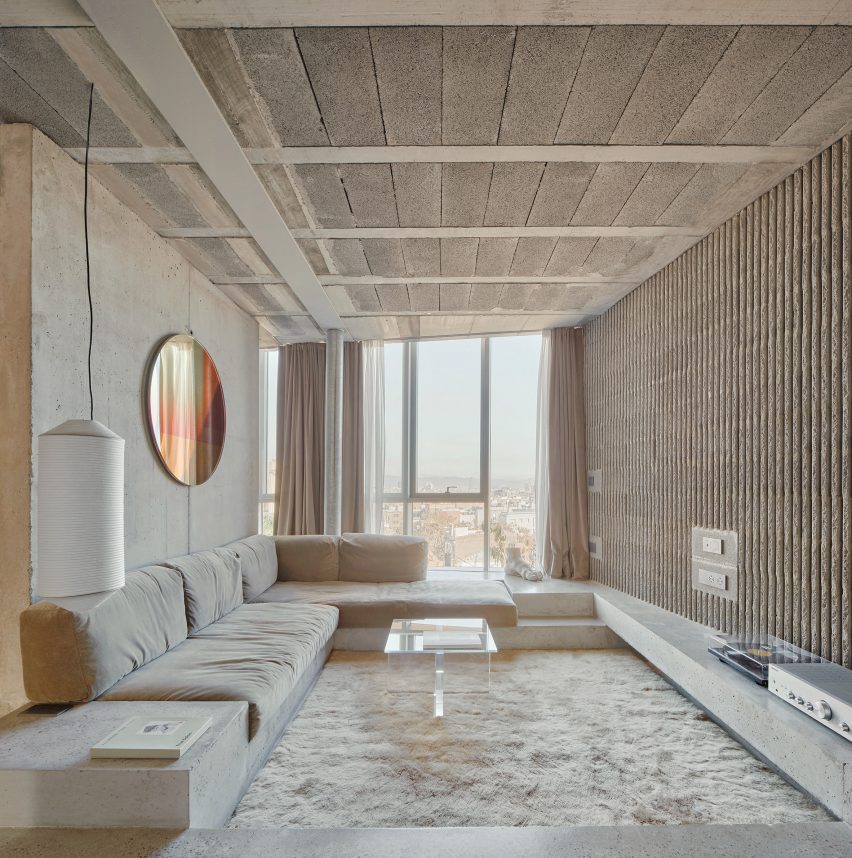
The new facades of the house are punctured by large glass panes set within deep metal frames, helping to create a bright interior.
Inside, an open-plan kitchen, living and dining area fills half of the ground floor and features a long metal island. Beyond this island, the interior steps down to reach the living room, which features a built-in sofa with a concrete base.
Throughout the interior, Architecture Office Claudia Raurell opted for a muted grey colour palette, with textural floors and ceilings with exposed concrete blocks and beams. This is warmed by wooden accents.
"We wanted to experiment with the capacities of grey colour in all its gradients, shadows and textures," said Raurell. "It expands and unfolds the grey colour in many different ways, through many different industrialised materials, on-site produced finishes and high-tech features."
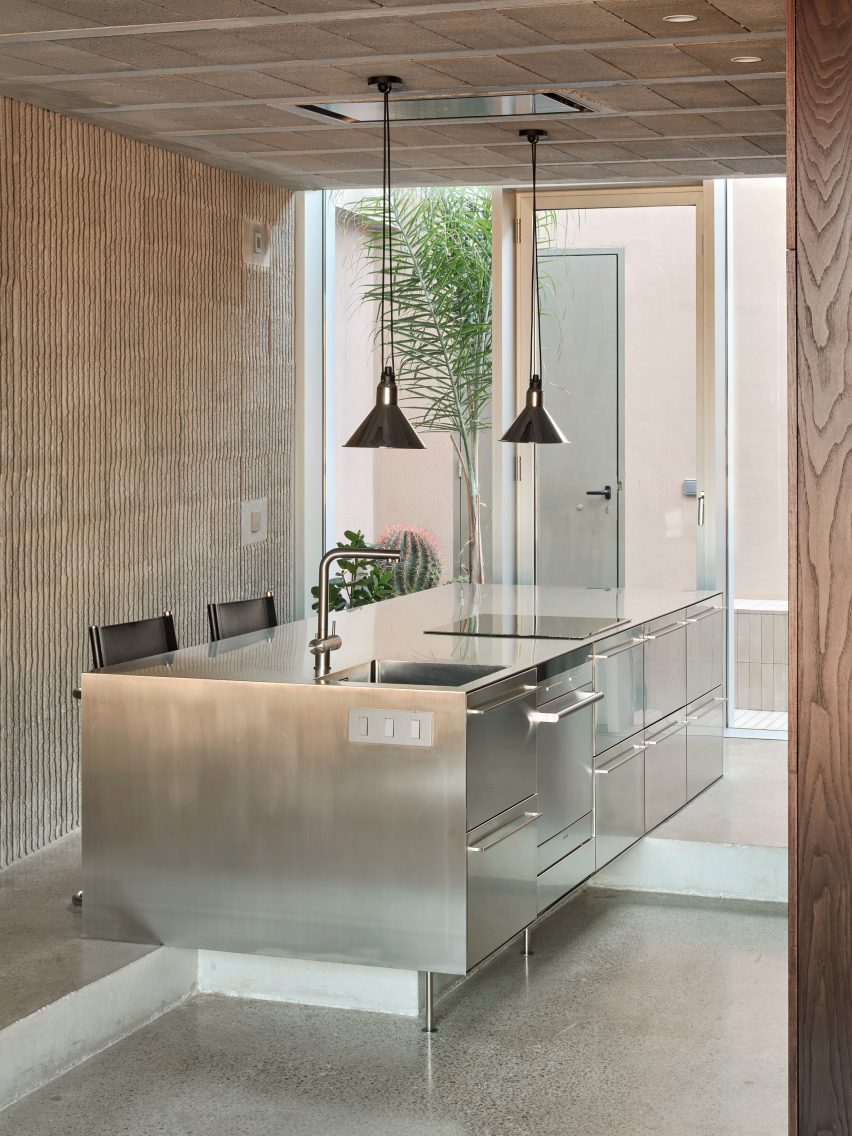
The other side of the ground floor contains a bedroom and bathroom. A monolithic bath sits at the front end, backing onto the glass facade that casts shadows over it.
A long sink area with a metal wall unit extends along one side.
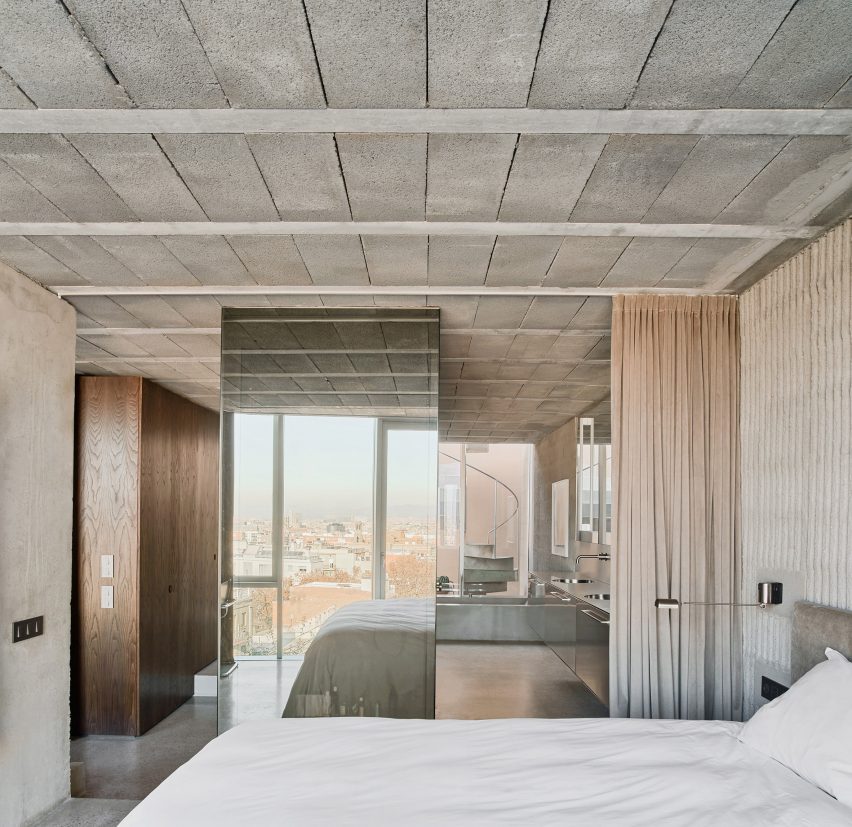
The main bedroom is separated from the other spaces by a neutral floor-to-ceiling curtain and features expansive glazing to maximise natural light.
Above, one-half of the first floor features a guest room and a small studio. A rooftop terrace takes up the other half, accessed by a metal spiral staircase from the front patio.
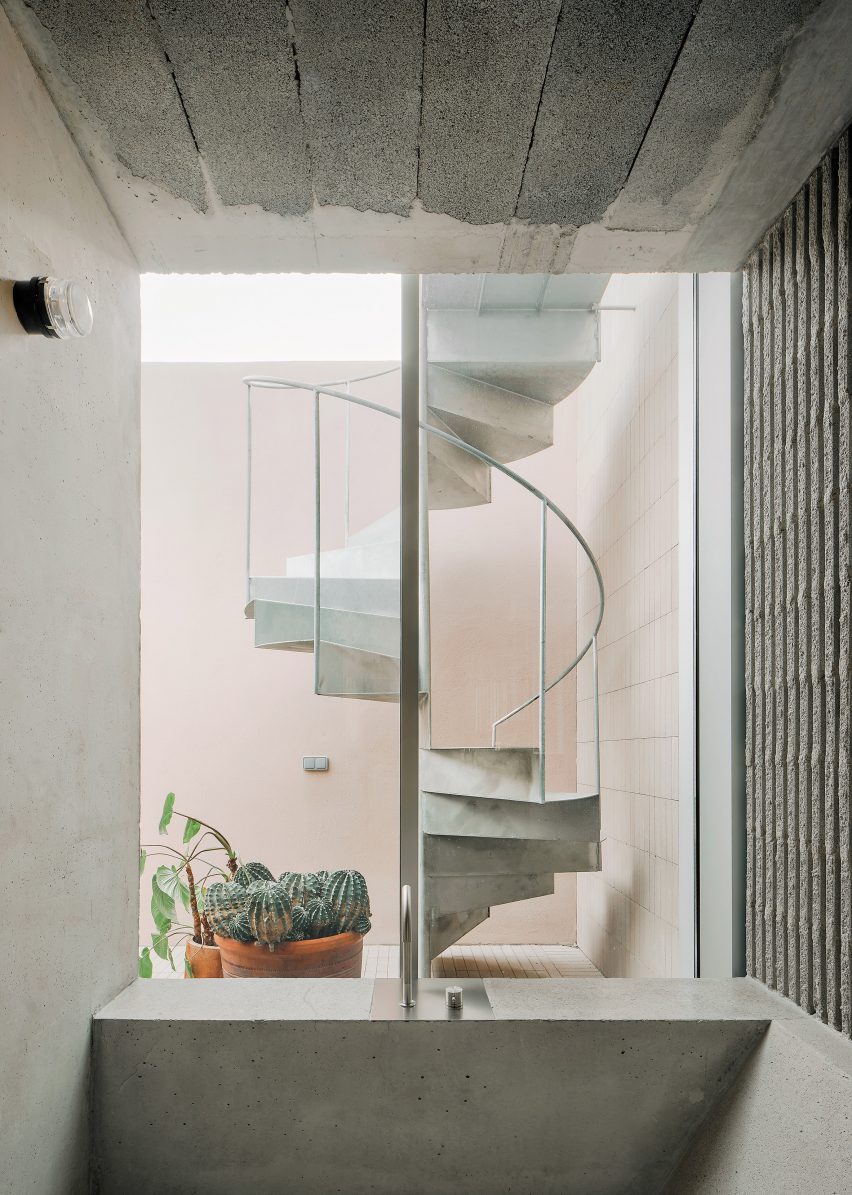
Across both levels of the home, ribbed concrete walls and floor-to-ceiling curtains animate the open-plan interiors, in addition to mirrors that give the illusion of extra space.
"The interior layout strategically places volumes to define and isolate spaces without doors, promoting deep, crossed views and dynamic circulation," said Architecture Office Claudia Raurell.
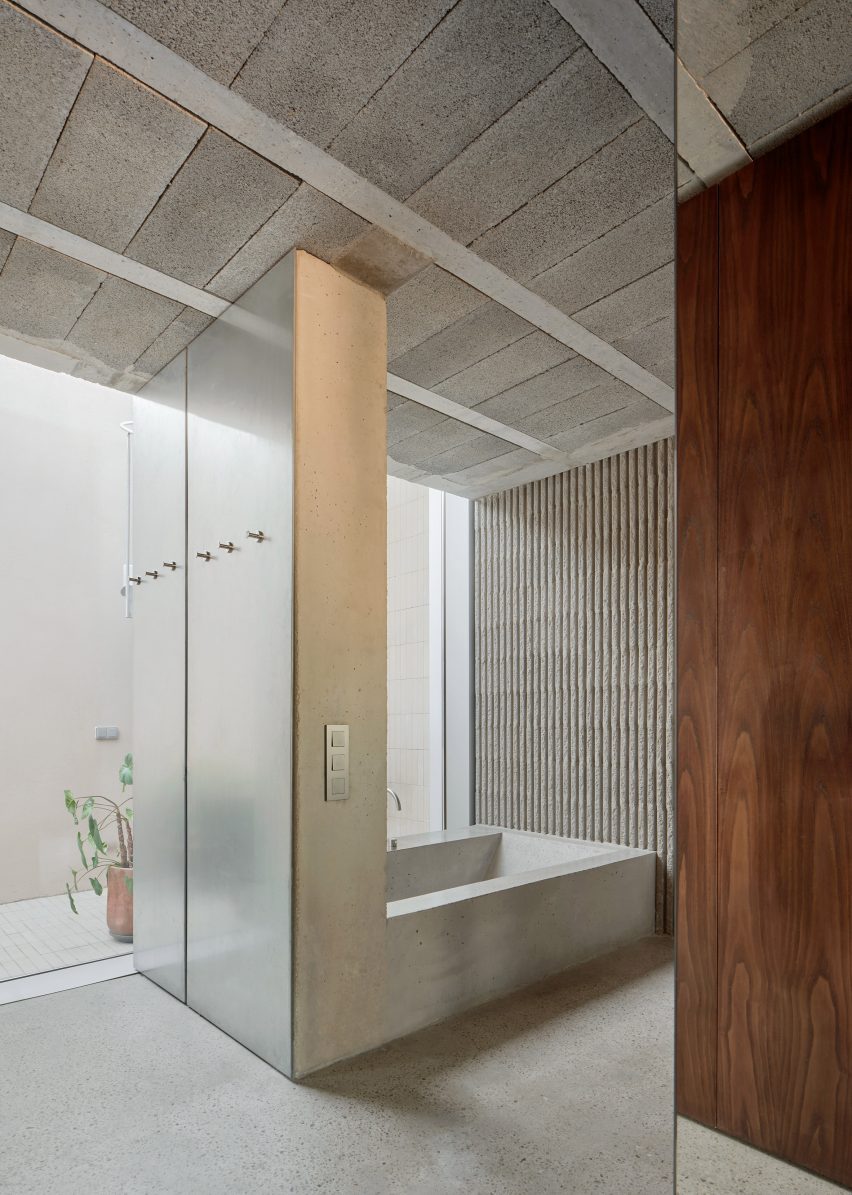
Other homes in Barcelona recently featured on Dezeen include a "robust" three-storey home made of layers of poured concrete and a monolithic residence finished with tactile materials.
The photography is by Jose Hevia.